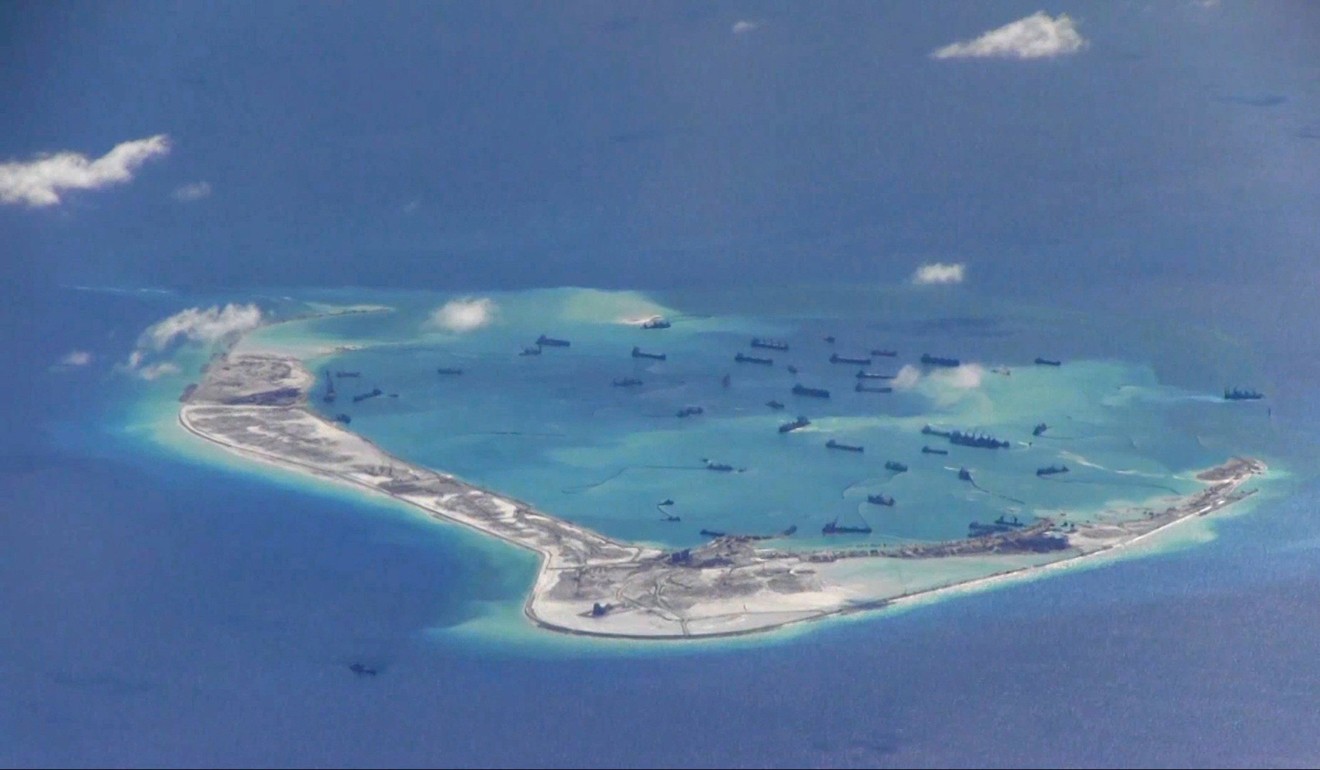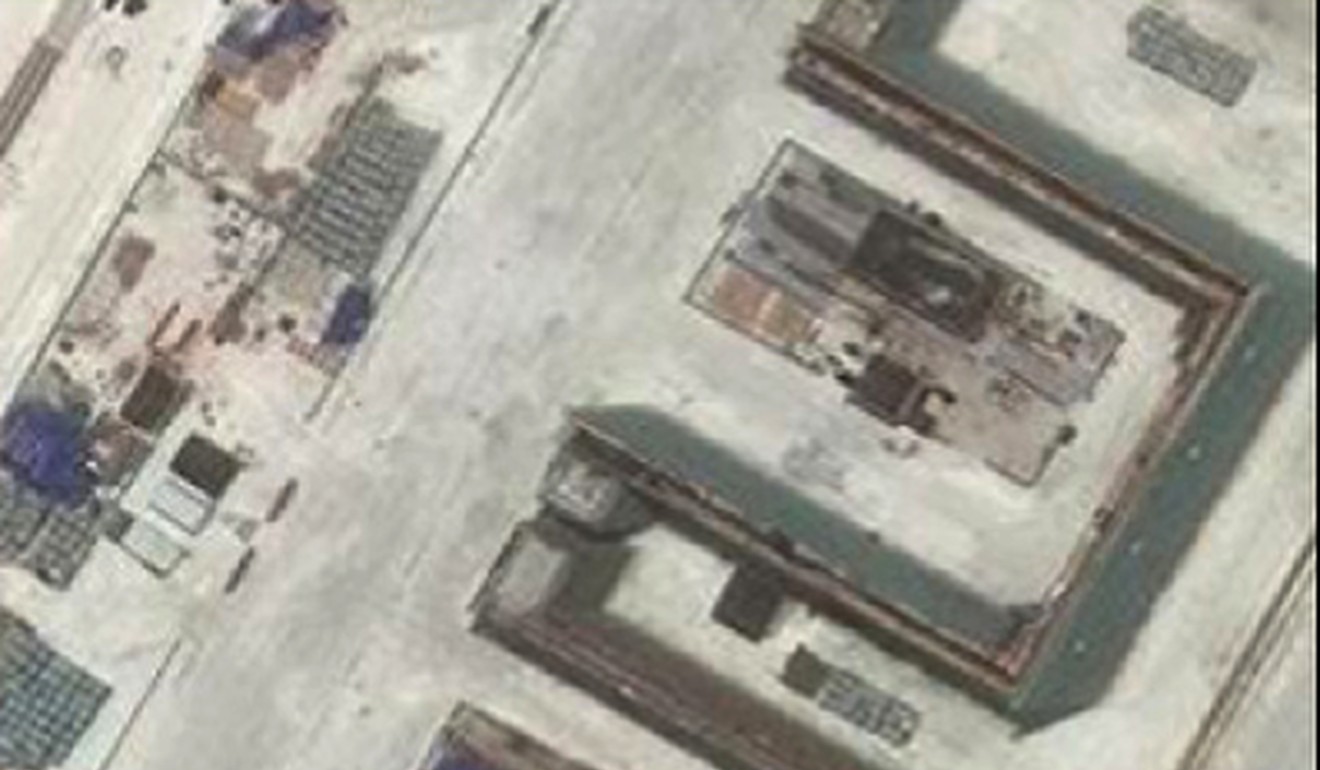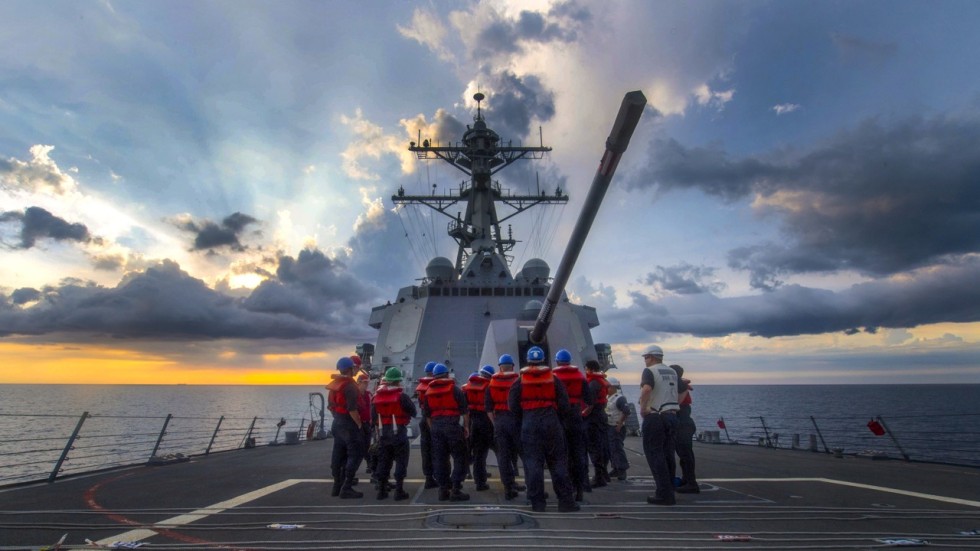Golez: This is a good definition of the US Navy's freedom of navigation operations or fonops in the South China Sea. The US is doing it for its own security interest but the other countries, like the Philippines, is a beneficiary of this security umbrella if implemented relentlessly and not intermittently. The first and only fonop so far under the Trump administration is very significant for the Philippines since the US navy selected Mischief Reef inside the Philippine EEZ as the target,. It also happens to be China's biggest artificial island:
"Meanwhile, the US fonops, despite the attention they receive, are Washington’s way of continuing to support the regional security architecture and the rules-based liberal international order. Fonops alone will hardly change the status quo in the South China Sea, but they will serve to remind China – and regional states – that the rules of the road remain internationally codified in documents like the Unclos treaty, despite the foreign ministry’s fantasies of “indisputable” sovereignty over nearly the entire South China Sea.
"That signal was important in the Obama era and it is doubly important in the Trump era, given a US administration that, quite frankly, seems entirely uninterested in the question of whether the liberal international order lives or dies. The question now will be if the Trump administration can sustain these operations and demonstrate that they are truly part of the routine “tick-tock” of life in the South China Sea – something the Obama administration failed to do."


"Meanwhile, the US fonops, despite the attention they receive, are Washington’s way of continuing to support the regional security architecture and the rules-based liberal international order. Fonops alone will hardly change the status quo in the South China Sea, but they will serve to remind China – and regional states – that the rules of the road remain internationally codified in documents like the Unclos treaty, despite the foreign ministry’s fantasies of “indisputable” sovereignty over nearly the entire South China Sea.
"That signal was important in the Obama era and it is doubly important in the Trump era, given a US administration that, quite frankly, seems entirely uninterested in the question of whether the liberal international order lives or dies. The question now will be if the Trump administration can sustain these operations and demonstrate that they are truly part of the routine “tick-tock” of life in the South China Sea – something the Obama administration failed to do."
Column
by
The real purpose of US Navy ‘freedom of navigation operations’ around disputed South China Sea islands
SCMP
‘Fonops’ in South China Sea are Washington’s way of continuing to support the regional security architecture and the rules-based liberal international order
PUBLISHED : Sunday, 28 May, 2017, 8:30am
UPDATED : Sunday, 28 May, 2017, 8:30am
With days to go before Asian defence officials meet in Singapore for the annual Shangri-La Dialogue, the United States carried out its first South China Sea freedom of navigation operation (fonop) for the year. The guided missile destroyer USS Dewey sailed within 12 nautical miles of Mischief Reef in the Spratly Islands.
Not only was the operation the first for the year, it was the first carried out by the Trump administration – which had, until the operation, largely pushed the disputes in the South China Sea and US policy therein to the back burner. The Obama administration’s final fonop was in October, leaving a break of more than 200 days between both events.
China reacted predictably to the operation. The foreign ministry issued a statement noting that the US vessel entered “the adjacent waters” of Mischief Reef without the “permission of the Chinese government” (we’ll come back to why the precise phrasing here matters). The ministry reaffirmed China’s view that its sovereignty over nearly 90 per cent of the South China Sea was “indisputable”.
More seriously, however, on the same day as the USS Dewey’s fonop,two Chinese jet fighters conducted what the US Navy complained was an unsafe intercept of a P-3C Orion anti-submarine warfare aircraft. The US aircraft was intercepted near Hainan Island, presumably in a move designed by the People’s Liberation Army to assert Beijing’s sovereignty to the region. The intercept came just days after a similar incident over the East China Sea.

Under US President Donald Trump, the US-China relationship has been singularly focused on the North Korean issue in the security realm and, in the economic realm, on trade. The South China Sea drew some buzz during the presidential transition period in the US, with Trump himself tweeting about China’s construction of a “massive military complex” in the area and then-secretary of state nominee Rex Tillerson seemingly proposing a plan to deny China access to its occupied features in the area.
Fonops, for all the hubbub they receive in the international press, are widely misunderstood to be part of the US Navy’s deterrence toolkit in the South China Sea. Instead, the US Department of Defence conceives of them as a routine legal signalling tool. Each operation is designed to protest against a maritime claim that can be described as “excessive” under international law (namely, the United Nations Convention on the Law of the Sea [Unclos], which the United States, despite not having ratified the treaty, treats as customary). Even in the South China Sea, the US protests excessive claims by other claimant states, including the Philippines, a US treaty ally.

The operation at Mischief Reef is notable for being the first to assert “high seas” freedom near a China-held artificial island in the South China Sea. As reported by the US Naval Institute, the USS Dewey came within six nautical miles of the island and carried out a man overboard drill – an activity that would be illegal if conducted within the 12 nautical mile legally defined “territorial sea” of a coastal state.
China’s use of the term “adjacent waters” in its response, too, was deliberate. Beijing did not proffer opposition to the operation couched in the language of the UN convention. Instead, it used its own bespoke language, allowing it to continue to maintain its claim of sovereignty despite a July 2016 ruling by an international tribunal finding China’s so-called nine-dash claim invalid.
Despite the often complex underlying legal logic used by both sides, China’s position in the South China Sea – certainly in the Paracel group, but increasingly in the Spratly group, too – is one of a fait accompli. Beijing’s island-building, which began in late-2013, cannot be reversed without a broader war – a fact that China is all too keenly aware of.
Meanwhile, the US fonops, despite the attention they receive, are Washington’s way of continuing to support the regional security architecture and the rules-based liberal international order. Fonops alone will hardly change the status quo in the South China Sea, but they will serve to remind China – and regional states – that the rules of the road remain internationally codified in documents like the Unclos treaty, despite the foreign ministry’s fantasies of “indisputable” sovereignty over nearly the entire South China Sea.
That signal was important in the Obama era and it is doubly important in the Trump era, given a US administration that, quite frankly, seems entirely uninterested in the question of whether the liberal international order lives or dies. The question now will be if the Trump administration can sustain these operations and demonstrate that they are truly part of the routine “tick-tock” of life in the South China Sea – something the Obama administration failed to do.
Ankit Panda is a senior editor at The Diplomat, where he writes on international security, diplomacy and economics in the Asia-Pacific region


No comments:
Post a Comment